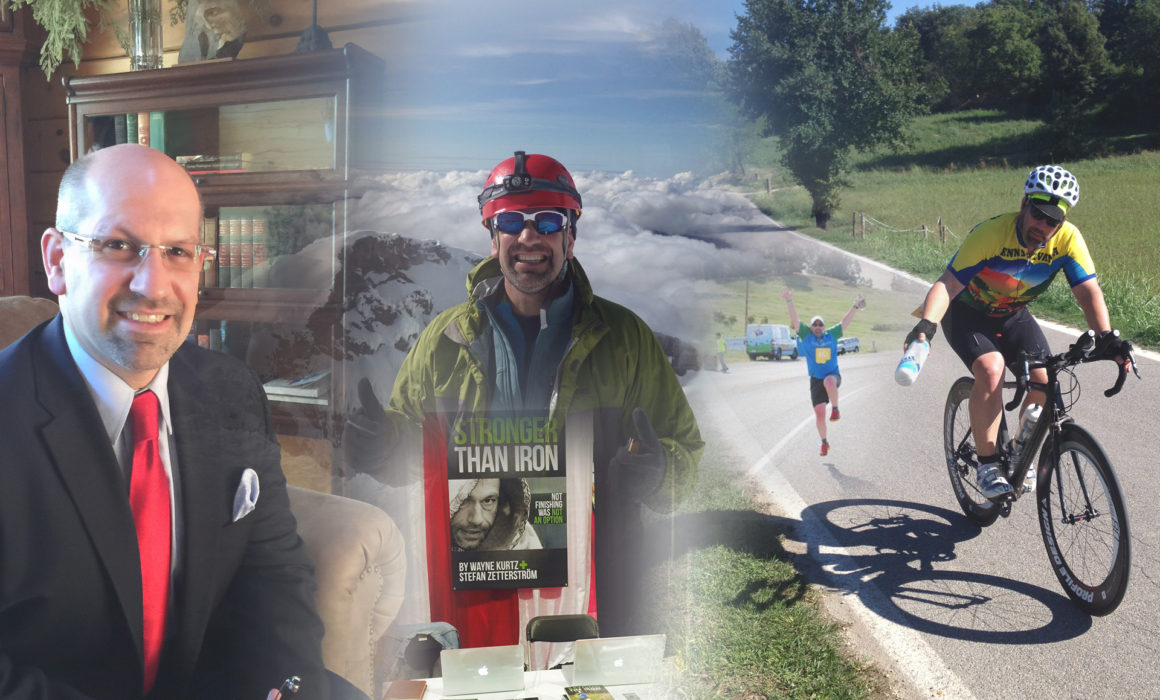EverEST Bike Challenge Perspectives

The Everesting Challenge is an intriguing idea for those of you who want to do “your own” long endurance event. The history of the idea and rules can all be found at http://www.everesting.cc/the-rules/. The rules are quite simple, find a hill and ride up and down it for as long as it takes to complete 29,029 feet or 8,848 meters of elevation gain.
Interestingly, I had a mental block on this challenge compared to many others I have done over the years. The idea of just going up and down with no miles riding rollers or flats in between (this is against the rules of the challenge!:-) would be quite different than a normal long ride. We all love tough challenges, but this one clearly is all mental. Surprisingly, the tempo pace was not tough on the legs with all the climbing. However, it was hard on the shoulders mainly from all the handlebar “pulling up” on the accents and aggressive riding on the descents. The impact on the shoulders, abs and lower back can be significant.
The final numbers: 22 hours of total time (actual riding time was round 18 hours – stopping for food, bathrooms, resupplies took around 3 hours and this was not a race), 127 laps of the course, 7-8% grade, .6 of a mile up and then the same down (1.2 total miles per loop), 29,322 feet of climbing, 152 miles and temperatures (Fahrenheit) ranged from 65 degrees at night to 86 degrees during the day.
 LOOKING UP AND UP!
LOOKING UP AND UP!
10 Tips to Consider When Attempting the Everest Challenge:
1. Measure out the course with respect to distance, elevation gain and calculate the total number of laps needed to reach the Everest goal. Find a shorter course vs. a longer course as it will provide more recovery. Also, if possible find a location with very little automobile traffic. If possible find a hill near a bathroom (mine was in a park and the bathroom was at the bottom of the hill.
2. Bring along at least 3-4 small charging batteries as you will need to charge lights, GPS and possibly your phone if you are recording with Strava.
3. Expect Strava and/or your GPS will go haywire at some point so have a backup manual plan.
4. Clip a small baseball pitch counter to your bike to record your laps – This is the backup plan when technology fails. Yes mine failed, Strava stopped recording after 15 hours for some reason and the GPS lost about 2 hours of time with bad reception. However, my course was on a climb that had heavy forest on both sides along with trees overhanging so reception was sketchy at times.
5. Fill up 15-20 bottles with water, electrolyte and liquid fueling sources and place in a large cooler (I used Spiz for the liquid calories). Consider eating some of the meals off the bike and just sit in a chair.
6. Don’t overthink this challenge, of course having adequate miles in the saddle is helpful but don’t just train for this challenge with a specific plan. Get out in the hills but this challenge will be more fun by just letting the climbing fall into place. Sure, you can evaluate the best gearing ratio’s however I suggest just go out and try it with whatever you have on your bike.
7. Coordinate with some friends or family to drop off food, ride a few laps (no drafting:-) Seeing friends surely helps.
8. Personal choice – late summer/early fall as the days are still long enough with adequate light and typically it won’t require to many layers of clothing.
9. Consider small food items to consume with large amount of calories – sandwiches with meat, cheese, avocado, sweet potatoes cut up worked quite well. The body is working a bit harder than a typical long ride, so keep the volume of food under control to eliminate stomach distress because of the elevated heart rate and effort.
10. Expect challenges and know how to deal with the adversity if your time goal is not met. Personally, my toughest parts were mentally the first 10,000 feet and then around 18,000 – 21,000 feet.
Clearly the challenge requires a long day in the saddle with elevated heart rates then quick recoveries but it’s actually quite fun once you get the first 6 or 7 hours under your belt. If your looking for a tough mental challenge endurance effort give the Everest Challenge a try – I am considering this as an annual event, COME OUT AND JOIN THE FUN.

